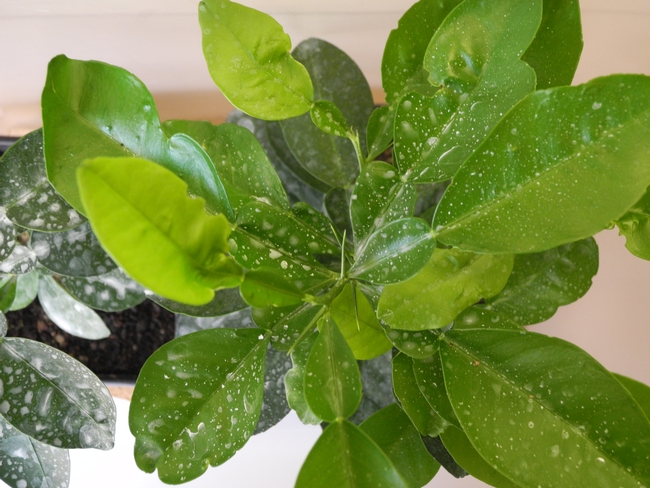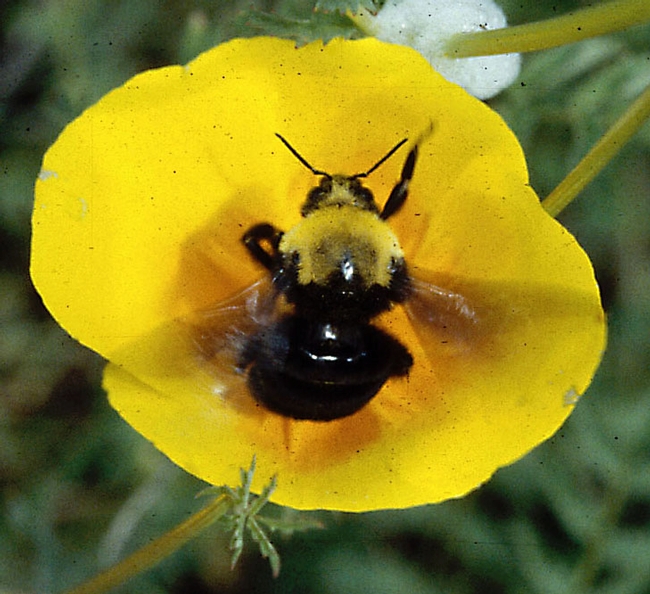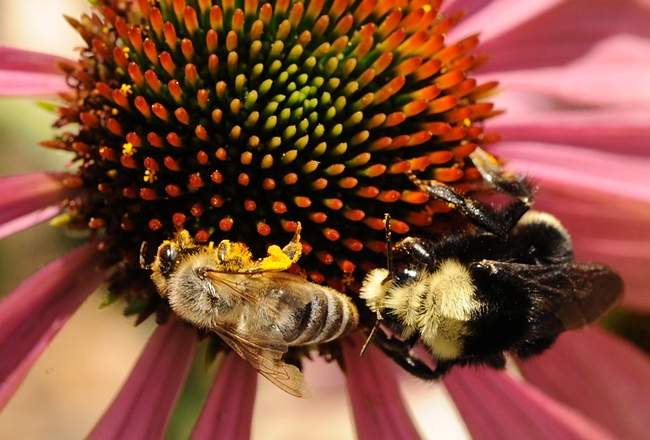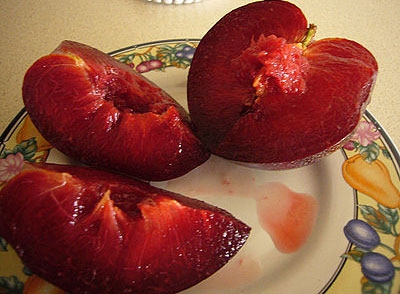From the UC Blogosphere...
Fuller rose beetles are tough to kill too
We have been treating citrus seedlings and releasing Fuller rose beetles adults onto them to see which insecticides might be effective in killing them. We are not seeing a lot of mortality. For some insecticides, rather than die, they avoid feeding on the treated foliage and they can live a long time without feeding. More details to come when we have the data analyzed........

Treatment of Kryocide minimized feeding by Fuller rose beetle
Breeding fruit that can compete with candy
Growing fruit that's good enough to compete with candy bars and potato chips is the goal of public and private fruit breeders, according to a recent Sacramento Bee story by Anne Gonzales. The story centered on Floyd Zaiger, whose company has been turning out fruit for 50 years.
Zaiger is one of the few private breeders operating on a large commercial and worldwide scale, said UC Davis geneticist and plant breeder Tom Gradziel. U.S. universities and the U.S. Department of Agriculture are typically the powerhouses behind finding successful hybrids, because the process is laborious and time-consuming, exposing a small business to financial risk.
"Breeding fruit is like playing cards," said Gradziel. "You keep reshuffling the deck, and looking at how they come out. There are about 100,000 genes to play with."
Market Watch: A better prune, but will anyone care?
David Karp, Los Angeles Times
Jim Doyle, a now-retired UC Davis fruit breeder who was based at the UC Kearney Agricultural Research and Extension Center, crossed Improved French prune with Tulare Giant, a large-fruited fresh-market European plum, in 1992. The new variety, named Muir Beauty, was irresistibly delicious. Muir is higher in sucrose than French, which has more glucose. Because sucrose tastes sweeter than glucose, Muir tastes sweeter than French, even at the same total sugar content, said Carolyn DeBuse, who helped evaluate the fruit as Doyle's successor in the prune-breeding program from 1999 to 2007. DeBuse is now the UC Cooperative Extension orchard systems farm advisor for Yolo and Solano counties.
Have You Seen Me?
It's good to see so many people looking for the critically imperiled Franklin's bumble bee, which the U.S. Fish and Wildlife...

Franklin's bumble bee. (Photo by Robbin Thorp)

A yellow-faced bumble bee shares a coneflower with a honey bee at UC Davis. (Photo by Kathy Keatley Garvey)
4-H members visit board of supervisors
Five members of Glenn County 4-H visited the county board of supervisors on Oct. 4 in recognition of National 4-H Week, Oct. 2-8, reported Rick Longley in the Willows Journal.
"We are very aware of how important 4-H is to our communities," supervisor Steve Soeth said. "You always put on a nice 4-H night for us to come see."
Deanna Rogers, Glenn County 4-H program representative, said there are 459 4-H members in the county affiliated with 10 clubs. Seven of the clubs participated in 4-H week by putting up displays at businesses and schools in Willows and Orland. The displays included information on 4-H history and projects.
SJV cotton harvest under way
Harry Cline, Western Farm Press
Cotton, like most California crops, has been roughly two weeks late through the season, but nice weather in August and September helped it get back on track.
“I think the cotton crop in the northern part of the valley has caught up,” remarked Bill Weir, UC Cooperative Extension farm advisor emeritus.
Entomological Foundation announces 2011 awardees
Press release
The Entomological Foundation announced the recipients of its 2011 awards yesterday, which will be presented at an awards luau reception Nov. 14 in Reno, Nev. The winner of the award for excellence in integrated pest management is UC Riverside entomology professor Joseph Morse.
Morse's research focuses on arthropod pests of citrus and avocados in California, dealing in particular with the integration of chemical and biological methods of pest management, invasive species research, proactive pesticide resistance management, and postharvest disinfestation of fruit, the news release said.
Two UC Davis scientists were among the Entomological Society of America's Insect Science award recipients. Michael Parrella, professor and chair of the UC Davis Department of Entomology, received the Distinguished Achievement Award in Horticultural Entomology. Walter Leal, a professor and former chair of the UC Davis Department of Entomology, received the Nan-Yao Su Award for Innovation and Creativity in Entomology.
Hail to the Chairs
It's a Good News Day. The Entomological Society of America (ESA) just announced that among the 2011 award recipients are...

UC Davis chemical ecologist Walter Leal is the recipient of ESA's Nan-Yao Su Award for Innovation and Creativity in Entomology. (Photo by Kathy Keatley Garvey)









